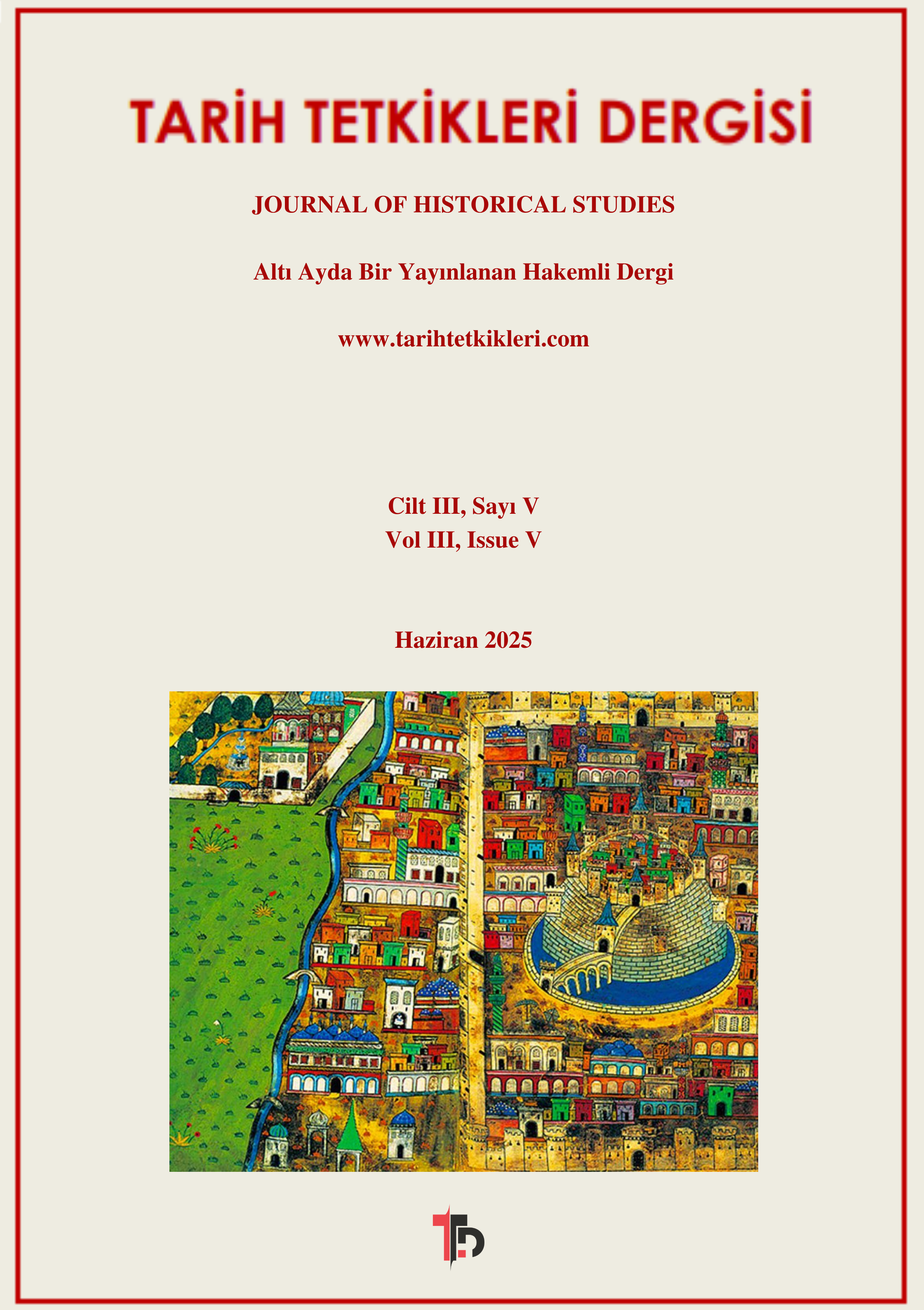A New Kurgan in the Steppe: Chinge-Tey West Kurgan 1
DOI:
https://doi.org/10.5281/zenodo.15573153Keywords:
Steppe, Culture, Kurgan, Nomadic, Chinge-Tey.Abstract
Geography is the first factor in the formation of societies' lifestyles. Societies living in areas suitable for agriculture have adopted the settled life style; those living in forests have adopted the hunter and gatherer life style. Societies living in geographies favourable to animal husbandry have revealed the nomadic lifestyle. Steppe societies living in Eurasia, which is an area suitable for animal husbandry, adopted a nomadic lifestyle and formed their culture in accordance with this lifestyle. Nomadic lifestyle is different from nomadic lifestyle and is not an ordinary life. It is a systematic migration movement to the highlands in the summer months and to the winter pastures in the winter months in order to prevent both themselves and their animals from being adversely affected by the climatic conditions of the geography where they live at certain times of the year. Nomadic tribes have also created their own history and culture within this nomadic lifestyle. Information on the history and culture of these tribes can be obtained from written, oral and archaeological sources. Oral sources carry the traces of that period since they were written down in the following process. Written sources belong mostly to the tribes they were in contact with. The main information about the steppe tribes is obtained from archaeological sources. At the beginning of the archaeological sources is the kurgan made in the form of a masonry hill grave where the steppe people were buried. There are many kurgan sites belonging to the steppe people in Eurasia. One of the areas where these kurgans are located is the Turan-Uyuk valley in Tuva. This valley is a region used by steppe tribes as a wintering ground. There are kurgans of various sizes here. One of these kurgans is Chinge-Tey West Kurgan 1. The remains such as arrow sticks, arrowheads, knives, mirrors, combs, make-up materials, headdress decorations unearthed as a result of archaeological excavations in this kurgan provided information about the cultural life of the steppe tribes.
References
Bibliyografya
ATAÇ, Galip, İskitlerde Hekimlik, Ankara bty.
BELLİ, Oktay “Eski Çağ ve Orta Çağ’da Türkler’de Kurgan Yapma Geleneği” Türkler III. Cilt, Yeni Türkiye Yayınları, Ankara 2002, s. 927-931.
ÇORUHLU, Yaşar, “ Eski Türklerde Ölüm” Cogito, 40, 2004.
ÇORUHLU, Yaşar, Eski Türklerin Kutsal Mezarları Kurganlar, Ötüken Neşriyat, İstanbul 2019.
DURMUŞ, İlhami, İskitler, Akçağ Yayınları, Ankara 2017.
DURMUŞ, İlhami, Türk Kültürüne Giriş, Akçağ Yayınları, Ankara 2016.
GINO, Caspari, Łukasz OLESZCZAK, Konstantin CHUGUNOV, Krzysztof MİCHALCZEWSKİ, Igor PİEŃKOS, Jacek GRUSZCZYŃSKİ, Konrad LEWEK, Natalia A. AGAPİTOVA, “Insights into Early Iron Age Social Structure in the Eastern Steppes: Excavation Results of the Chinge-Tey Western Chain Kurgan 1”, Journal of Field Archaeology, Volume 50, 2025, ss. 327-344.
GRYAZNOV, M. P. Arzhan, Tsarskii Kurgan RanneskifskogoVremeni, Nauka, Leningrad 1980.
Herodotos, Herodotos Tarihi, (Çev. Müntekim Ökmen) ,Türkiye İş Bankası, İstanbul 2015.
İbn Fadlan, İbn Fadlan Seyahatnamesi (Çev. Ramazan Şeşen) Yeditepe Yayınları, İstanbul 2022.
KAFESOĞLU, İbrahim, Türk Millî Kültürü, Ötüken Neşriyat, İstanbul 2010.
KOCA, Salim, Türk Kültürünün Temelleri, II, Pelin Ofset Tipo Matbaacılık San. ve Tic. Ltd. Şti. Ankara 2010.
TARHAN, M. Taner, “Ön Asya Dünyasında İlk Türkler Kimmerler ve İskitler”, Türkler I. Cilt, Yeni Türkiye Yayınları, Ankara 2002, ss. 597-610.
Downloads
Published
How to Cite
Issue
Section
License
Copyright (c) 2025 Mazhar Narşap

This work is licensed under a Creative Commons Attribution 4.0 International License.



